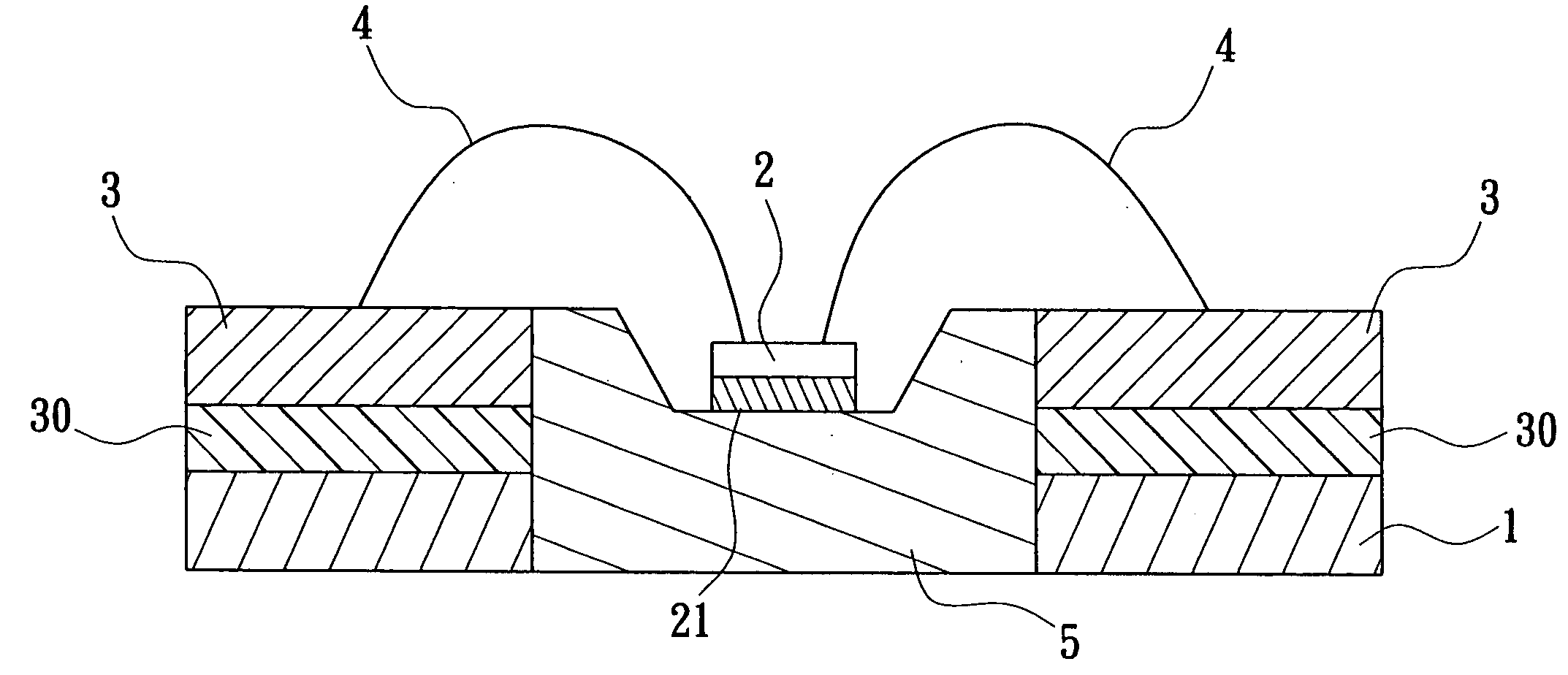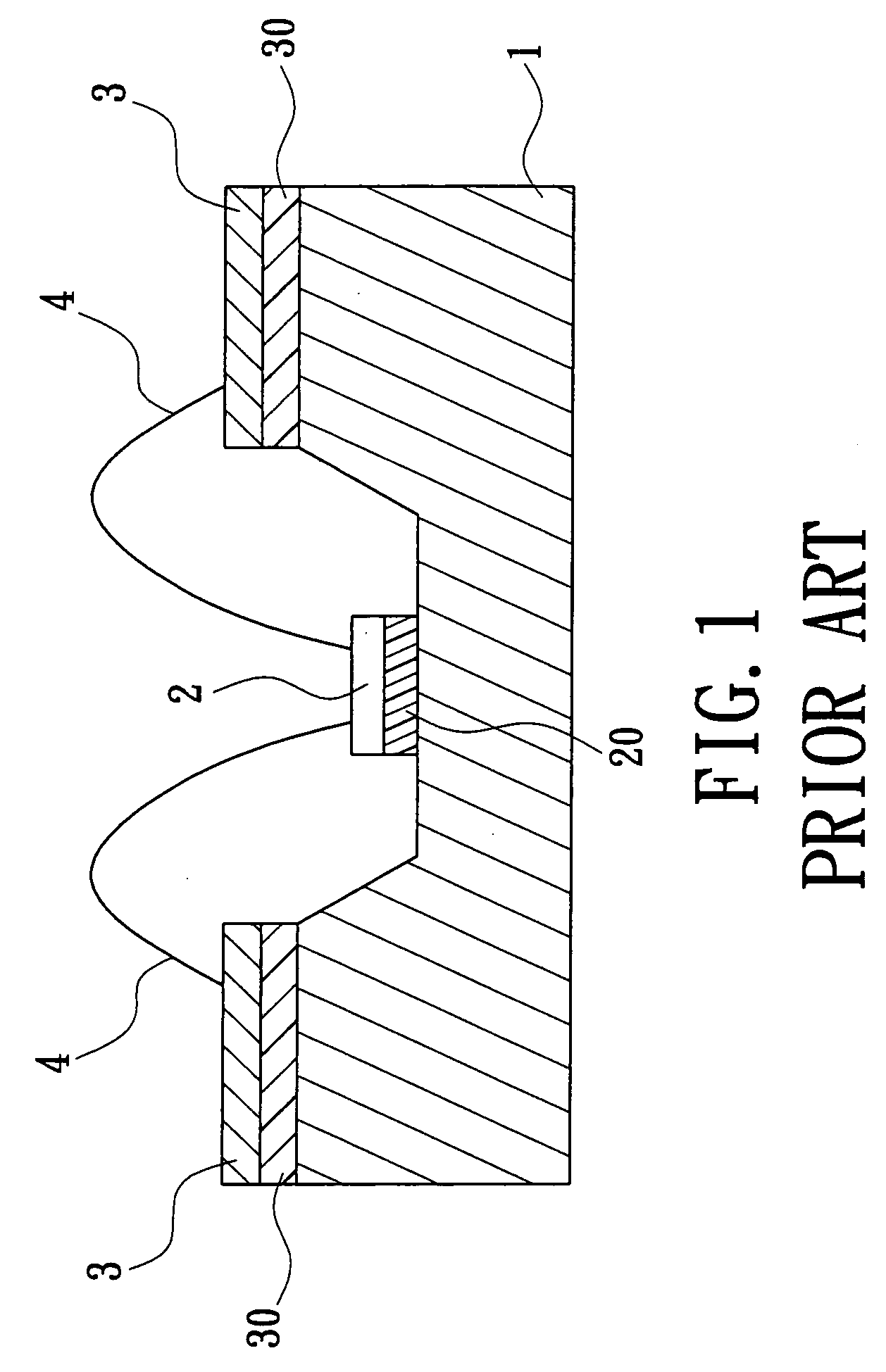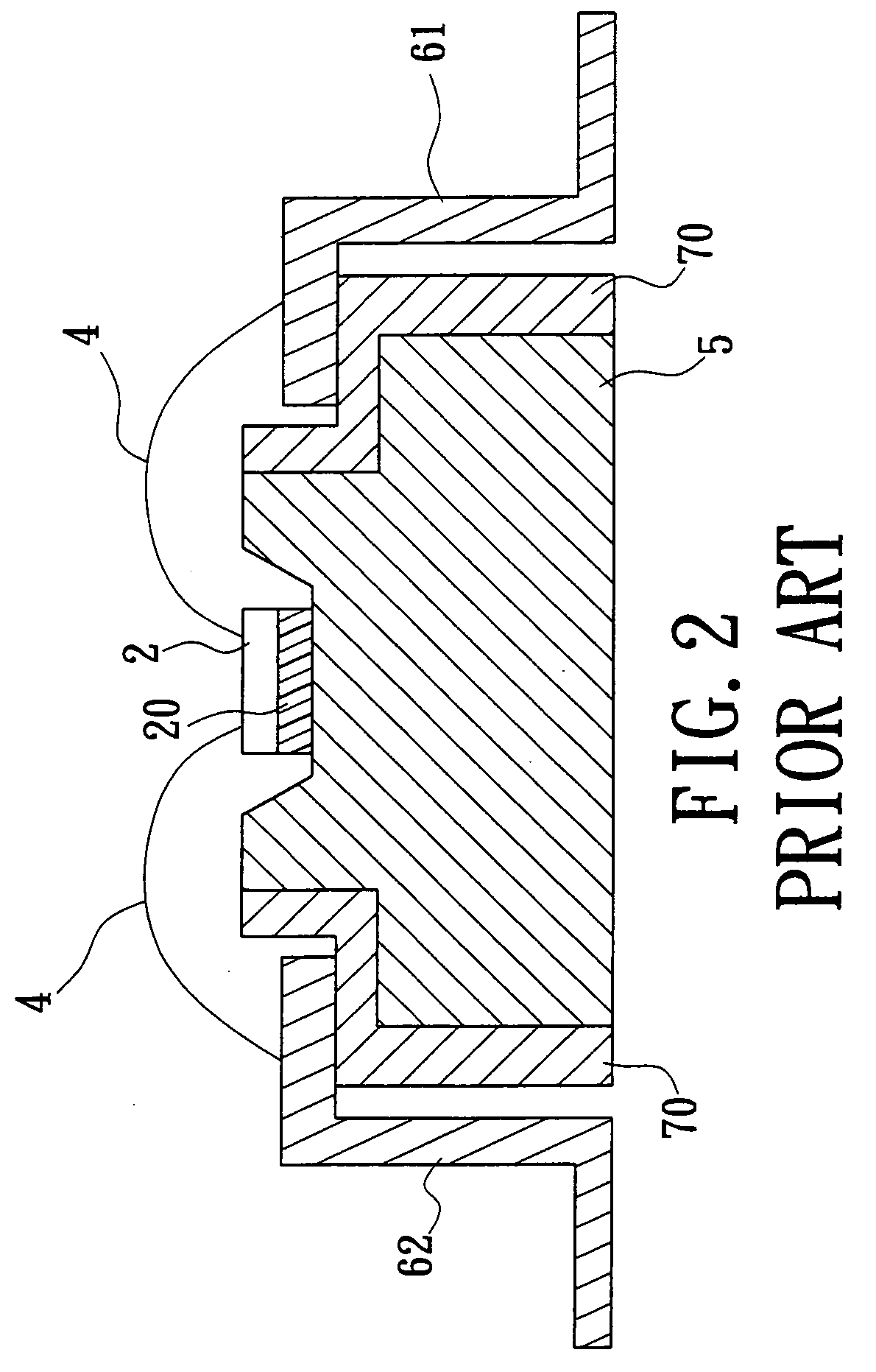Light emitting module and process thereof
a technology of light emitting diodes and light-emitting modules, which is applied in the direction of light-emitting devices, transportation and packaging, light-emitting devices, etc., can solve the problems of reducing efficiency, reducing the efficiency of light-emitting diodes, so as to reduce the temperature and reduce the effect of conducting heat energy
- Summary
- Abstract
- Description
- Claims
- Application Information
AI Technical Summary
Benefits of technology
Problems solved by technology
Method used
Image
Examples
Embodiment Construction
[0023]FIG. 3 is a structural cross-sectional view which illustrates a light emitting module according to an embodiment of the present invention. As shown by FIG. 3, the present invention provides a light emitting module comprising a metal substrate 1, at least one LED 2, a printed circuit board 3, at least one conductive wire 4 and a bearing base 5. The bearing base 5 is disposed on the metal substrate 1, and the printed circuit board 3 is stuck on the metal substrate 1 through an insulation colloid 30. The LED 2 is adhered on the bearing base 5 through a compound metal via the method of eutectic soldering. The LED 2 is electrically connected to the printed circuit board 3 though the conductive wires 4 separately. Wherein, the compound metal 21 may consist of gold and tin (or silver and tin) which is a medium with high thermal conductive coefficient. Because of the characteristic of the compound metal 21, it is able to conduct more effectively the heat energy which is produced by th...
PUM
 Login to View More
Login to View More Abstract
Description
Claims
Application Information
 Login to View More
Login to View More - R&D
- Intellectual Property
- Life Sciences
- Materials
- Tech Scout
- Unparalleled Data Quality
- Higher Quality Content
- 60% Fewer Hallucinations
Browse by: Latest US Patents, China's latest patents, Technical Efficacy Thesaurus, Application Domain, Technology Topic, Popular Technical Reports.
© 2025 PatSnap. All rights reserved.Legal|Privacy policy|Modern Slavery Act Transparency Statement|Sitemap|About US| Contact US: help@patsnap.com



